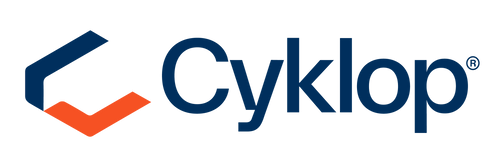Coding and Marking on Food Packaging
Few industries are as highly regulated as food production and packaging. As with pharmaceutical development and chemical manufacturing, food industry professionals must comply with relevant laws, standards, and regulations to place their products in stores. From state-level meat and dairy coding regulations to the Fair Packaging and Labeling Act (FPLA), food manufacturers and co-packers must honor certain guidelines or face expensive fines and product recalls.
Depending on product specifics, food companies often need to label packaging with the following:
- Lot codes
- Serial numbers
- Expiration dates
- Barcodes/data matrices
For over 30 years, InkJet, Inc. has helped companies complete coding and marking on food packaging. With our diverse marking solutions and specialty inks, you can create efficient marking workflows for ongoing regulatory compliance.
Comply With Food Industry Marking Standards With Custom Printing Solutions
The need for unbroken traceability has gradually risen as food supply chains have expanded in scope and complexity. To ensure public safety and mitigate food concerns, state and local governments worldwide issue traceability regulations to counteract:
- Higher risks of food spoilage due to longer supply chains
- The proliferation of counterfeit products sold through online retailers
- A higher likelihood of contamination from widely-sourced ingredients
Regulations vary by food sector and geographical location, but they all aim to minimize quality control issues via traceable product markings. With the help of lot codes, batch numbers, and other traceable markings, companies can:
- Source all product ingredients
- Trace the ingredients supply chain movement before facility arrival
- Track products during distribution and warehousing until the final point of sale
- More accurately recall products in emergency cases
To comply with food packaging marking and coding regulations, companies must have the proper hardware to create long-lasting, highly readable product codes. That’s where InkJet, Inc. can help.
InkJet, Inc’s Solutions for Coding and Marking on Food Packaging
In a field as multifaceted as food packaging, there is no "one size fits all" marking solution. Packaging materials, output requirements, facility conditions, and other key production elements vary from one company to the next. To meet the diverse needs of the food packaging industry, InkJet, Inc. carries a variety of printers, laser marking systems, and secondary packaging equipment.
This table displays the general specs of our different food packaging coding technologies. Additional information on each option can be located further below. To jump to a specific solution’s information, click the hyperlinked title in the table’s leftmost column.
|
|
||||||
|
|
|
|
|
|
|
|
|
|
|
|
|
|
|
|
|
|
|
|
|
|
|
|
|
|
|
|
|
|
||
|
|
|
|
|
|
||
|
|
|
|
|
|
|
|
|
|
|
|
|
|
|
|
|
|
|
|
|
|
|
|
Continuous Inkjet Printers: DuraCode Touchscreen, Keyboard, and Pigment
Continuous inkjet (CIJ) printers are non-contact production line printing systems designed to mark substrates moving at 300 m/min and above. Built with powerful ink circulation systems, CIJ printers can operate up to 24 hours daily without downtime. The wide ink compatibility and versatile printheads of CIJ printers equip users to mark diverse food packaging materials, including:
- Corrugated boxes
- Paperboard cartons
- Aluminum cans, foil, and bottles
- Metal sheets and foil
- Plastic bags
- Glass bottles
- Plastic bottles
- Tetra Pak® and aseptic packaging
- Flexible packaging
- Shrinkwrap and flexible film
|
|
|
|
See the chart below for a closer look at the DuraCode models’ most important specifications.
|
|
|
|
|
|
|
|
|
|
|
|
|
|
|
|
|
|
|
|
|
|
|
|
|
|
|
|
|
|
|
|
|
|
|
|
|
|
|
Thermal Inkjet Printers: Anser U2, X1, and A1 Models
Thermal inkjet (TIJ) printers are smaller, lighter, and more cost-effective than CIJ systems. While CIJ systems typically weigh around 100 lbs and can cost well over $10,000, most TIJ models weigh 5-10 lbs and cost as low as $1,499.00.
Although thermal inkjet systems are compact and lightweight, they offer impressive coding specifications. For example, the Anser U2 Smart can create 400 x 300 DPI codes up to 0.5” tall (1” tall with the Anser U2 SmartOne). Higher-end TIJs like the Anser X1 can create 600 x 600 DPI codes up to 2” tall with stitched printheads. These qualities enable TIJ operators to complete product marking tasks as well as case coding applications
TIJ printers are often designed for slower speed lines and intermittent coding tasks, but some TIJ models offer high-speed capabilities as well. InkJet, Inc. carries numerous TIJ printers of varying specialties and price points. Our current options include:
|
|
|
|
|
|
|
|
|
|
|
|
See the chart below for a closer look into how our TIJ options compare to one another:
|
|
||||
|
|
|
|
|
|
|
|
|
|
|
|
|
|
|
|
|
|
|
|
|
|
|
|
|
|
|
|
|
|
|
|
|
|
|
|
|
|
|
|
|
|
|
|
|
|
|
|
|
|
|
|
|
|
|
|
|
|
|
|
|
|
|
|
|
|
|
|
|
|
|
|
Laser Marking Solutions: Fiber, CO2, and UV Laser Models
Laser marking systems are perfect for food packaging companies that require high coding speeds, reliable accuracy, and exceptional code appearance. For example, large-scale operations frequently use laser systems to meet demanding quotas, minimize coding errors, and enhance their products’ visual appeal. As laser marking systems have become more affordable, they have become increasingly popular with smaller-scale companies as well.
Laser systems are more expensive than TIJ and CIJ printers upfront, but they do not use any consumables. Moreover, they have minimal maintenance needs and do not require annual servicing. Depending on your product output, these factors can actually make laser marking more cost-effective than inkjet printing.
Inkjet Inc. offers four laser models:
- F8100F Fiber Laser Marking Machine
- F8100C CO2 Laser Marking Machine
- LDR 7100 Laser Marking System (CO2 System)
- F8100U UV Laser Marking Machine
Our laser systems offer similar specifications and benefits. The F8100F, F8100C, LDR7100, and F8100U provide:
- Marking speeds up to 2000 characters/sec.
- 24/7 uninterrupted coding
- Reliable ingress protections
- Long laser tube life
- Enhanced high-resolution mark quality
- Plug-and-play laser module for easy line replacement
- User-friendly control panel via computer or smartphone app
Material compatibility is the main difference between our laser options. Fiber, CO2, and UV lasers produce beams of different wavelengths. Beam wavelength significantly influences material compatibility, so it’s important to understand which laser technology is best suited for your substrates as you consider your system options.
This chart illustrates the material compatibility of fiber, CO2, and UV laser systems:
|
|
||||
|
|
|
|
|
|
|
|
|
|
|
|
|
|
|
|
|
|
|
|
|
|
|
|
|
|
|
|
|
|
|
|
|
|
|
|
|
|
|
|
|
|
|
|
|
|
|
|
|
|
|
|
|
|
|
|
|
|
|
|
|
|
|
|
|
|
|
|
|
|
|
|
|
|
|
|
|
|
|
|
|
|
|
|
|
|
|
|
|
|
|
|
|
|
|
|
|
|
|
|
|
|
|
|
|
|
|
|
|
|
|
|
|
|
|
|
|
|
|
|
|
|
|
|
|
|
|
|
|
|
|
|
|
|
|
|
|
|
|
|
||||
See the chart below for a closer look into our laser systems’ most important specifications.
|
|
|
|
|
|
|
|
|
|
|
|
|
|
|
|
|
|
|
|
|
|
|
|
|
|
|
|
|
|
|
|
|
|
|
|
|
|
|
|
|
|
High-Resolution Case Coders: Precision Series 18mm & 72mm
High-resolution case coders (hi-res) excel at placing high-quality images and codes on porous substrates.
|
|
|
|
See the chart below for a closer look into the Precision Series’ most important specifications:
|
|
|
|
|
|
|
|
|
|
|
|
|
|
|
|
|
|
|
|
|
|
|
|
|
|
|
|
|
|
Print-and-Apply Label Machine: Evolabel Systems
Print-and-apply labeling machines (PALM) streamline the labeling process by continuously creating labels and applying them to passing products or shipping cartons. Predominantly used to label shipping cartons, PALM systems can complete primary, secondary, and tertiary applications with the right equipment.
Users can customize their print-and-apply labelers to complete specific tasks. PALM systems are made of multiple components, with two of the most important being:
- The printer module, which prints labels on-demand
- The label applicator, which dispenses and applies each label to a product, carton, or pallet
By selecting the ideal printer/applicator combo, you can use a PALM system to efficiently label most popular food packaging substrates, including:
- Cardboard boxes
- Paperboard cartons
- Aluminum cans and bottles
- Glass bottles
- Rigid plastic containers
- Plastic bottles
- Tetra Pak® and aseptic packaging
- Flexible packaging
|
|
|
|
By investing in an Evolabel system, you can simplify your package labeling process, reduce the risk of error, and maximize packaging efficiency.
Diverse Inks for Coding and Marking on Food Packaging
Even if you buy the best printer in the world, you can only comply with today's strict marking standards with the proper ink. For example, if you tried to use the same formula to mark cold-fill bottles and flexible films, you would end up with messy, unreadable codes.
To ensure marking success, InkJet, Inc. maintains a robust ink catalog filled with formulas for every substrate, including:
- Rigid Plastic
- Paperboard
- Corrugated cardboard
- Glass
- Aluminum
- Tetra-Pak/Aseptic Packaging Materials
- Shrinkwrap and other flexible films
Moreover, our ink development team has created a range of specialty inks that are perfect to meet certain challenges that are unique to the food packaging field. Some of our popular specialty inks offer the following properties:
- Heat-resistance
- Alcohol-resistance
- Moisture-resistance
- Thermochromic/color changing qualities
- Fast drying times
- Food safe qualities
Want To Improve Your Food Packaging Marking & Coding Processes? Call InkJet, Inc. Today
InkJet, Inc. has helped food packaging companies comply with strict marking standards for over 30 years. Today, we carry numerous coding solutions for operations of all sizes and specialties. Contact us today to learn which solution will work best for you.
To learn more about how InkJet, Inc. can help you complete food packaging marking and coding applications, contact us online today or call 1(800) 280-3245



